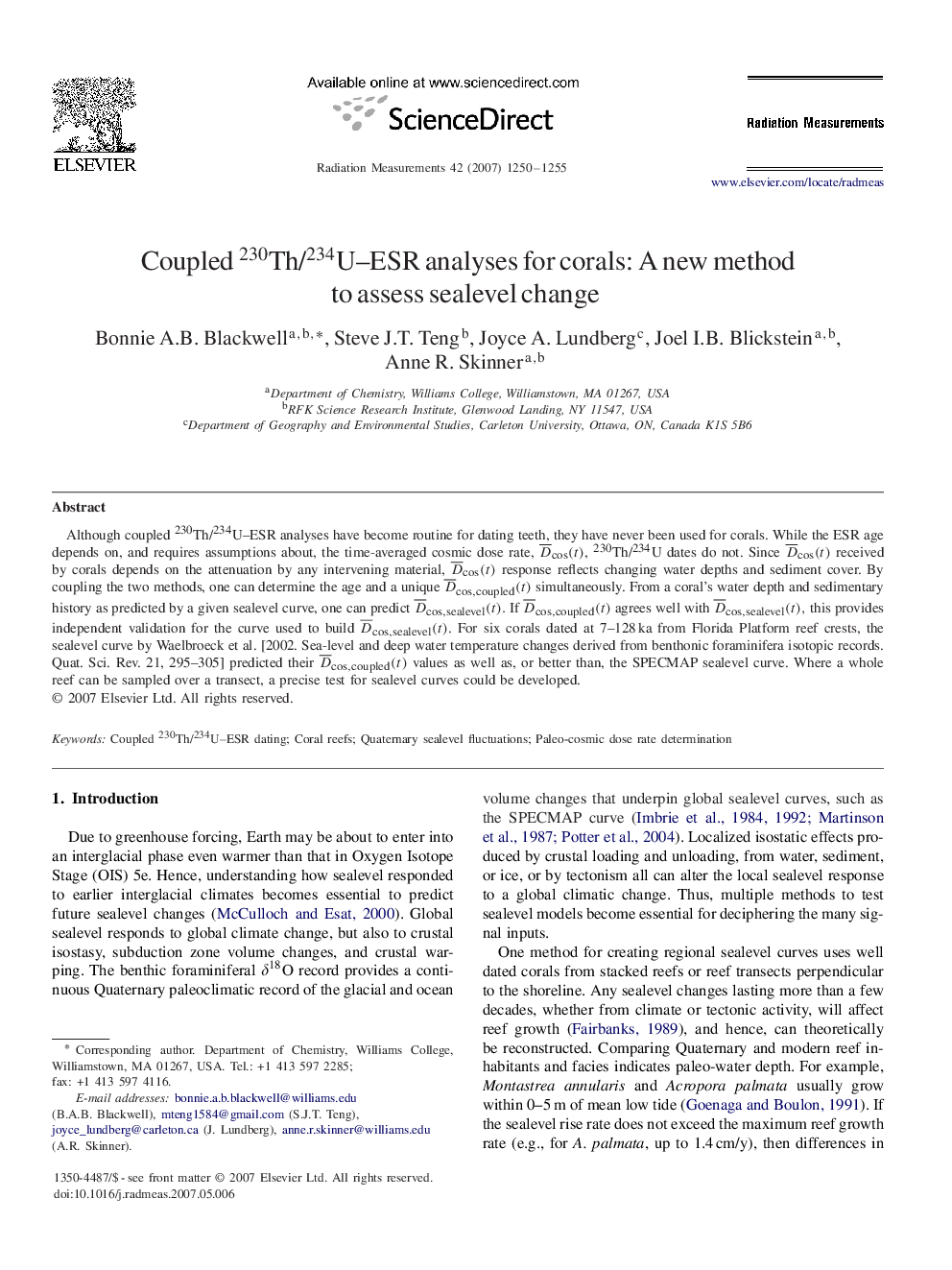| کد مقاله | کد نشریه | سال انتشار | مقاله انگلیسی | نسخه تمام متن |
|---|---|---|---|---|
| 1889017 | 1533449 | 2007 | 6 صفحه PDF | دانلود رایگان |

Although coupled 230Th/234U–ESR analyses have become routine for dating teeth, they have never been used for corals. While the ESR age depends on, and requires assumptions about, the time-averaged cosmic dose rate, D¯cos(t), 230Th/234U dates do not. Since D¯cos(t) received by corals depends on the attenuation by any intervening material, D¯cos(t) response reflects changing water depths and sediment cover. By coupling the two methods, one can determine the age and a unique D¯cos,coupled(t) simultaneously. From a coral's water depth and sedimentary history as predicted by a given sealevel curve, one can predict D¯cos,sealevel(t). If D¯cos,coupled(t) agrees well with D¯cos,sealevel(t), this provides independent validation for the curve used to build D¯cos,sealevel(t). For six corals dated at 7–128 ka from Florida Platform reef crests, the sealevel curve by Waelbroeck et al. [2002. Sea-level and deep water temperature changes derived from benthonic foraminifera isotopic records. Quat. Sci. Rev. 21, 295–305] predicted their D¯cos,coupled(t) values as well as, or better than, the SPECMAP sealevel curve. Where a whole reef can be sampled over a transect, a precise test for sealevel curves could be developed.
Journal: Radiation Measurements - Volume 42, Issues 6–7, July–August 2007, Pages 1250–1255